Computer Architecture
1/7
There's no tags or description
Looks like no tags are added yet.
Name | Mastery | Learn | Test | Matching | Spaced |
|---|
No study sessions yet.
8 Terms
What is computer architecture?
A set of rules and methods that describe functionality, organisation and implementation of computer systems
Can be applied to many layers
Processor architecture
Memory architecture
Instruction set architecture
System level: how we link processors to I/O
What is the Von Neumann architecture?
Proposed by John Von Neumann in 1945
Memory: stores data and instructions
Control unit: contains instruction register and program counter
Processing unit: contains ALU and processor registers
I/O mechanisms
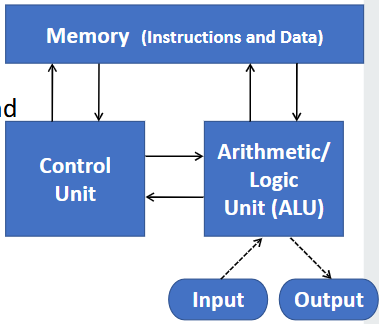
What is the CPU composed of?
Consists of:
ALU: arithmetic logic unit
CU: also contains high-speed cache memory
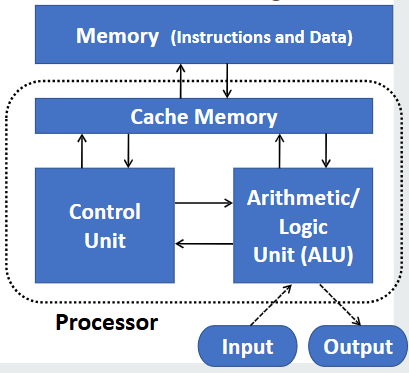
What are advantages and disadvantages of the Harvard architecture?
Advantages:
Overcomes bottleneck issues with Von Neumann
Parallel access to instruction and data = faster
Better against cyber attacks
Disadvantages:
Higher costs as it needs more memory since data and instruction data storage is seperate
IMPORTANT
Instructions and data memory is seperate
Cannot change instruction memory at run-time
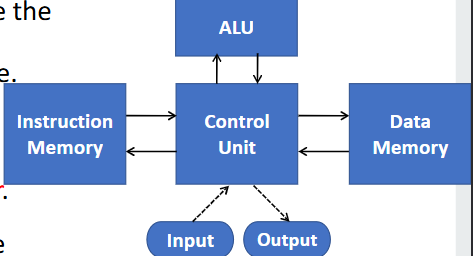
What is the modified Harvard architecture?
Improvement to the original Harvard version
Still seperates instruction and data caches INTERNALLY, BUT a single unified main memory is still visible to users/programs
Used in chips e.g. ARM9, MIPS, x86
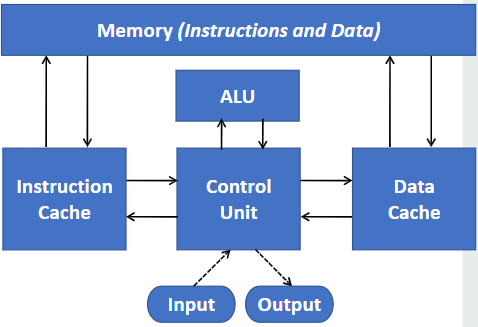
What is the modern PC architecture?
Divided into regions according to speed of operation
Memory controller: northbridge
Manages communication between CPU and RAM
Is now inside the CPU, allows faster access and lower latency
Input / Output controller: southbridge
Manages I/O devices (e.g. USBs, keyboards, mouses
Also manages audio and disc drives
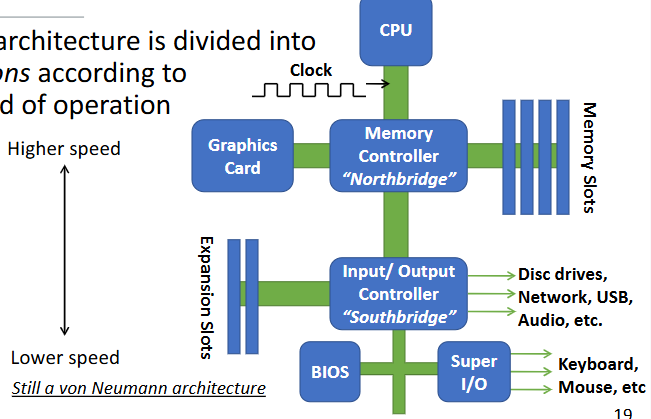
What are the popular metrics for measuring speed of computers?
Increase clock rate
e.g. 1.87 GHz = 1.87 billion ticks per second
IMPORTANT: Computer being faster ≠ CPU being faster
Only the CPU gets faster - Unfair to compare clock rate
MIPS (millions of instructions per second)
Better indication of speed BUT depends on which instructions are counted
Also unfair as there can be different results for different programs
FLOPS (floating point operations per second)
Even better indication of speed “where it counts”
Also unfair
None are ideal to measure other factors, e.g. I/O speed
What are limiting factors on speed?
Density limitations
Number of transisters per square inch
“Moore’s Law”: made in 1965, transistor number on a silicon doubles every 2 years
Still only a theory as it was only observed
Did not increase performance, only transistors
Power limitations
1/3 of power used to propogate clock signal around the processor
Therefore power and heat problems increase as clock rates increase
Cooling becomes challenging to accommodate this problem
As performance demands increase:
Inability to increase clock speed lead to the manufacturers making multi-core processors
Can also increase performace by linking computers using high-speed networks
Led to “blade servers”
Application runs across cluster but some application cannot be easily decomposed this way